The bevel protractor is used to establish and test angles to very close tolerances. It reads to 5 minutes or 1/20o and can be used completely through 360o.
A circle can be divided into 360 equal angles. Each angle is called degree. So a circle is 360 degrees (360o). For calculation a degree is divided into 60 parts called minutes and a minute is sub-divided into 60 parts called seconds.
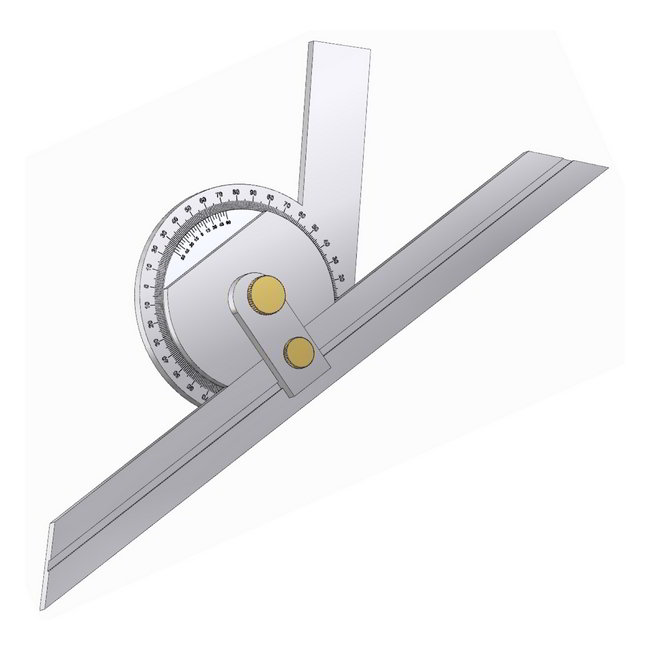
The bevel protractor consists of a beam, graduated dial and blade which is connected to swivel plate (with Vernier scale) by thumb nut and clamp.
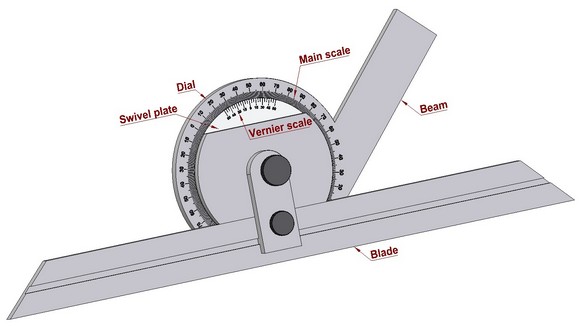
When the edges of the beam and blade are parallel, a small line on the swivel plate coincides with the zero line on the graduated dial, and when any measurement of an angle between the beam and the blade of 90 degrees or under is desired, the reading may be obtained direct from the position of the line on the swivel plate with regard to the graduation numbers on the dial. But remember this: To obtain the measurement of the angle between the beam and the blade of over 90 degrees subtract the number of degrees as indicated on the dial from 180 degrees. This is because, the dial is graduated from opposite zero marks to 90 degrees each way.
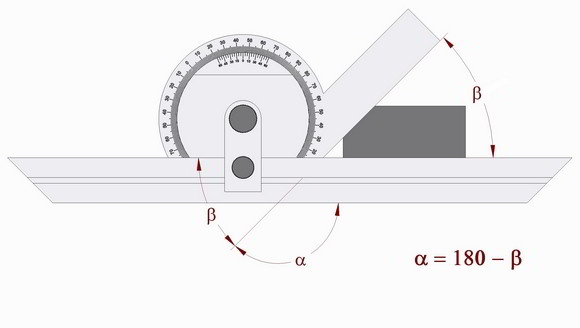
Since the spaces, both on the main scale and the vernier scale, are numbered both to the right and to the left from zero, any angle can be measured. The readings can be taken either to the right or to the left, according to the direction in which the zero on the main scale is moved.
Picture below illustrates a variety of uses of the bevel protractor.
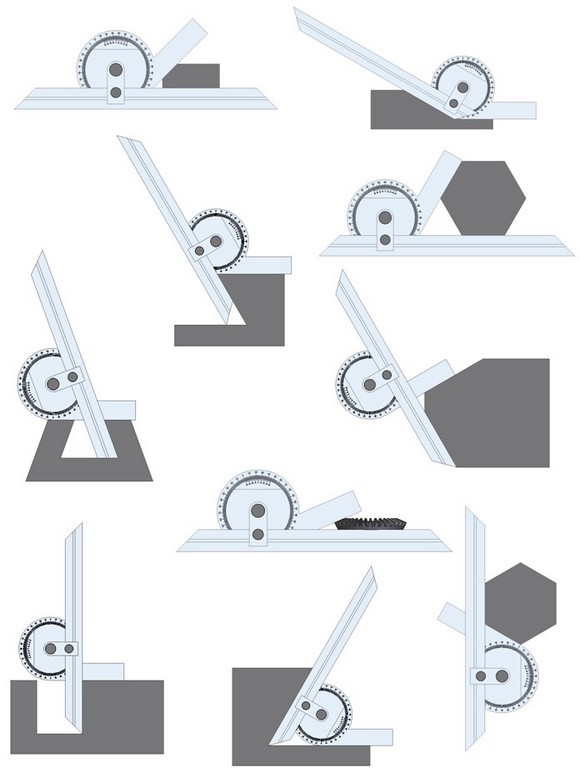
Reading the bevel protractor Vernier scale:
The bevel protractor vernier scale indicates every five minutes or 1/20 of a degree. Each space on the vernier scale is 5 minutes less than two spaces on the main scale. Twenty four spaces on the vernier scale equal in extreme length twenty three double degrees. Thus, the difference between the space occupied by two degrees on a main scale and the space of the vernier scale is equal to one twenty fourth of two degrees or one twelfth of one degree (or five minutes).
Read off directly from the main scale the number of whole degrees between 0 on this scale and the 0 of the vernier scale. Then count, in the same direction, the number of spaces from the zero on the vernier scale to a line that coincides with a line on the main scale; multiply this number by 5 and the product will be the number of minutes to be added to the whole number of degrees.
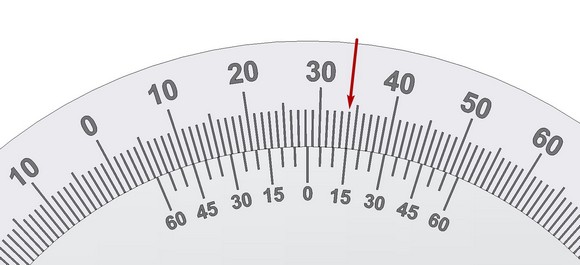
For example: Zero on the vernier scale has moved 28 whole degrees to the right of the 0 on the main scale and the 3th line on the vernier scale coincides with a line upon the main scale as indicated. Multiplying 3 by 5, the product, 15, is the number of minutes to be added to the whole number of degrees, thus indicating a setting of 28 degrees and 15 minutes.